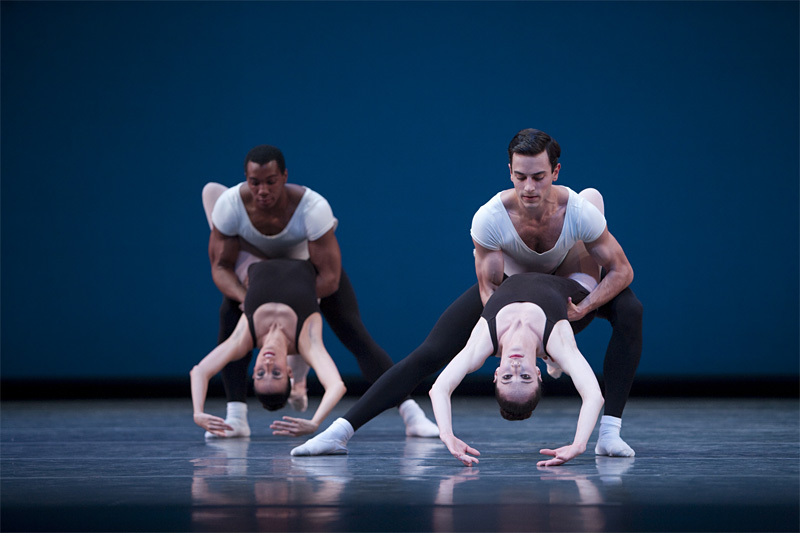Nearly 30 years after his death, some complain that George Balanchine has stifled the development of American ballet. He’s too popular, say critics, his name too salable. How can young choreographers compete? Whether you agree or not, such criticism helps us remember how his neoclassical style took the fuss out of ballet. He cleared away the dependence on elaborate scenarios and complex relationships, focusing instead on pure music and movement. Interpretation was secondary.
The danger of his stripped-down aesthetic is that any small faux pas can’t be disguised with stagecraft or glitz. Fortunately, Pacific Northwest Ballet has three decades’ experience with bare-bones Balanchine, and no such subterfuge is attempted in the three pieces in its current program.
Principal dancers are returning to parts they’ve danced in the past, including Olivier Wevers as Phlegmatic in The Four Temperaments. He makes Balanchine’s peculiar isolations into long, twisting phrases that suggest an emotional state without overt acting. Ariana Lallone rips across the stage in the Choleric section with even more zeal than in PNB’s most recent production in 2004. She’s a genuinely frightening presence on her entrance; yet gradually her agitation becomes control, and she takes her place among the group.
Among the newbies, Lindsi Dec trades the cheerful, showbizzy flair shown last year in Balanchine’s Rubies for a vengeful, almost Wagnerian figure as Choleric.
Square Dance employs a much more traditional dance vocabulary, set to the busy motor of baroque music (by Vivaldi and Corelli). There are two main speeds here, fast and faster, so the lead part usually goes to the swiftest women in the company. Contending with the jumpy, steppy choreography, Carrie Imler and Kaori Nakamura give the same impression: “Sure, this is fast, but I could go faster.” (Originally the work was performed with a square-dance caller onstage; even without the hollering, it’s pure pleasure to see Imler’s feet go wickety-wack.)
The only adagio sequence here is a contemplative solo for leading man. He’s asked to do one beautiful turn instead of five frenzied ones, to walk simply and stand easily instead of jumping to the rafters. Among the three dancers sharing the role, Benjamin Griffiths seems the most dramatic, placing a little accent on each modest gesture.
The emphasis in Serenade, which opens the program, is on the ensemble. Its original 1934 function as a training piece is still evident today. Kaleidoscopic groupings allow individual performances to emerge from the mass.Laura Gilbreath displays assurance and abandon as “the Waltz Girl” (as the part is usually called), and Lesley Rausch dances “the Russian Girl” with speed and power. Serenade suggests that if others stepped forward, they too would have unique stories to tell.
On opening weekend, during a post-show discussion, Lucien Postlewaite remarked that this Balanchine program was like “coming home.” Indeed, these are heritage pieces that PNB dances with authority.








